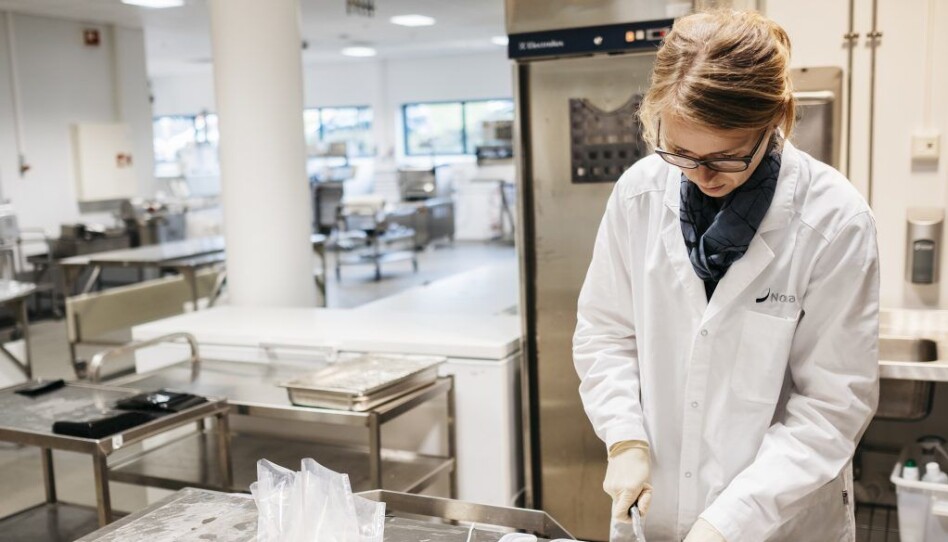
Would you like salt fish or klippfisk for dinner today?
That’s really something you should have thought of yesterday or even the day before.
There are many tasty dishes where saltfish or klippfisk - dried and salted cod - is an important part of the meal. But if you would like to have saltfish or klippfisk for dinner today, that’s really something you should have thought of yesterday or even the day before.
This is because saltfish and klippfisk products contain so much salt that they must be desalted by soaking them overnight before they can be eaten.
Salt curing and/or drying of fish
One advantage with salt-cured fish (and dried fish) is that it keeps for a very long time.
Salt curing and drying of fish and meats are old traditional practices for preserving food. Many have probably had the experience of eating too salty pinnekjøtt (salted and dried ribs of mutton, soaked and steamed) for Christmas, where the meat has not been allowed to soak long enough before it was served. This is also the case for saltfish and klippfisk. As they contain around 20 percent salt, the fish must be soaked until the salt levels are only at around 2-3 percent in order to be fit for consumption.
Drying and salt curing of fish has been done for ages. When the fish is placed in salt, the salt extracts moisture from the meat. After being buried in salt for a long period of time, the fish will contain so much salt and so little moisture that few microorganisms can survive. The result is a product which will keep well for a long time.
The taste of the product is determined by how long the fish is immersed in salt. Saltfish can be further preserved by drying it. The result is dried and salted cod, also known as klippfisk.
The difference between klippfisk, saltfish and stockfish
Depending on the preservation method used, whether the fish is salted or dried, you can make three different products.
But what distinguishes saltfish, klippfisk and stockfish from one another?
Stockfish is dried, but not salted.
Saltfish is salted, but not dried.
Klippfisk, on the other hand, is first salted and then dried.
Stockfish is usually dried outdoors, while klippfisk is now primarily being dried indoors.
The main raw material for these products is cod, but other types of white fish can also be used.
...and a bit of history
Historically, humans have probably dried cod ever since we learned how to catch it. The Norwegian word for cod, “torsk”, can actually mean “the fish that is dried”.
Since the main season for catching cod is in winter, it was traditionally important to be able to make it keep longer in order to enjoy this great source of protein all year round.
The Vikings were probably the first to bring stockfish to the European continent, first as provisions for themselves and later even as a commodity.
The breakthrough for stockfish exports came with the Hanseatic merchants in the 13th century.
By the mid-1500s, stockfish got competition from saltfish and klippfisk. It is believed that the process of salting and drying fish originated when Spanish fishermen carrying salt in their cargo travelled to Newfoundland and picked up dried cod. The result was klippfisk.
In Norway, the production of klippfisk started around 1690, and the practice picked up pace in Kristiansund and Ålesund in the 1800s. Back then, the practice was to dry the fish directly on flat seaside rocks.
Today, around 100,000 tonnes of klippfisk is exported to approximately 50 countries worldwide.

Short shelf life after soaking
Saltfish (and less commonly dried fish) can be soaked and desalted by various methods, usually over the course of several days. The time required depends on the size of the pieces of fish, the total amount of fish, the temperature of the soaking water and whether you change the water in the process, one or multiple times.
When saltfish and stockfish is soaked, it goes from having very long shelf life to very short shelf life as a fresh product. This is because the conditions of the fresh product are ideal for bacterial growth, with low salt levels and an abundance of water. So, if you wish to sell soaked saltfish or dried fish as a fresh product, you will face problems with drastically shorter shelf life.
Longer shelf life for soaked saltfish and klippfisk
In order to prolong shelf life it is possible to use various packing methods or to process the product. You could also deep-freeze soaked and desalted fish and sell it as a frozen or thawed product.
Nofima experiments have shown that the process of packing saltfish that has been desalted through soaking in sealed packaging with CO2 provides opportunities for longer shelf life.
Experiments have also shown that the temperature during soaking plays an important role in terms of bacterial growth, where soaking at a temperature of 1°C results in less bacterial growth than with a temperature of 4°C.
New technology extends shelf life
By subjecting soaked and desalted saltfish and klippfisk with high-pressure treatment – we’re talking about extreme pressures of 4000–6000 bar – experiments have shown that we can achieve a shelf life of at least 49 days. This level of pressure might cause changes in the consistency of the raw fish, making it a little bit tougher.
A trained sensory panel, which consists of experts in assessing and sensing differences in flavour and consistency in various foods, was used to taste various fish products. They tested samples of boiled klippfisk, and concluded that there were only small differences between a boiled, high-pressure processed sample compared with a boiled, unprocessed (i.e. not subjected to high pressure) sample.
Producers of saltfish and klippfisk want to help make it possible for you to have klippfisk for dinner today if you want to. Research has shown that the shelf life of soaked and desalted saltfish and klippfisk could increase from a few days to several weeks, depending on packaging and process conditions and good hygiene from the catch to the manufacturing stage.
It would be wonderful if our research could contribute to the emergence of new and expanded varieties of products using fish which has been desalted through soaking, so it’s ready to be served on the same day.
SPersonally, we recommend bolinhos with aioli: deep-fried balls of klippfisk and mashed potatoes, delicious both as a starter and a main course. You could make a big portion and then freeze the un-fried balls individually – so you’re all set to pop them out of the freezer and deep-fry them whenever the fancy takes you.









